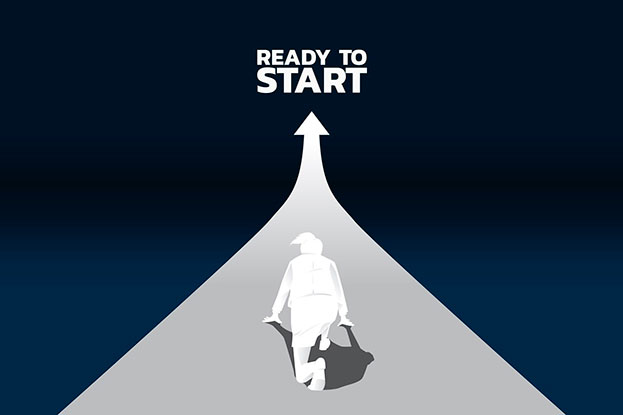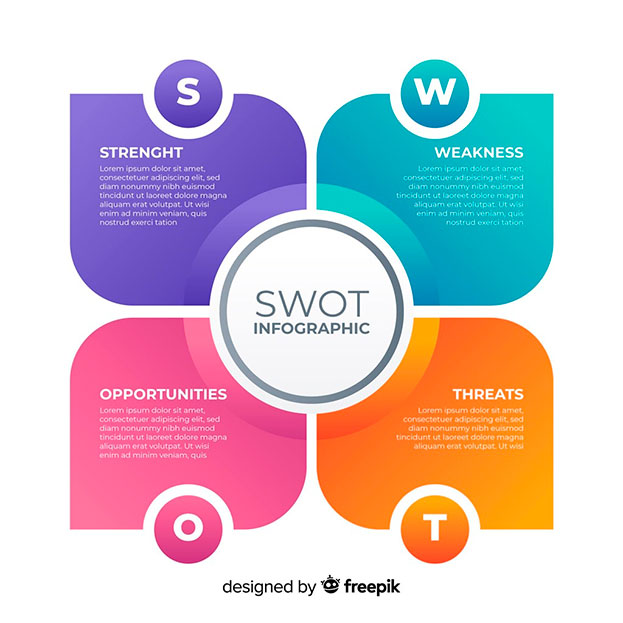11 Easy Ways To Greatly Improve Work Performance
Are all your employees performing to the best of their ability?
If you ask yourself that question, the answer will likely be NO, if your employees are salaried. Truth be told, a job, in its essence, is much more than what we do to make ends meet.
It is something in which we take pride and also associate our personal identity with.
If you look at the most successful names across all fields of work, you’ll find a couple of things in common - impeccable work ethics and continuous performance improvement. Your employees too can reach their level, but it requires consistent effort and perseverance.
After all, “Those at the top of the mountain didn’t fall there.”
The average person spends a considerable part of their lifetime in the workplace. If someone were to live for 79 years, they would spend approximately 13 years working. So, it makes sense to try to improve their work performance.
You can find a plethora of tips and tricks online, but today we’ve handpicked 11 easiest yet effective ways for you to take your employees’ work performance up a notch!
Ways to Improve Work Performance
1. Set Milestones & Targets
Professionals working in MNCs are given aggressive targets to meet. Working to meet a deadline can be stressful. But you must encourage your subordinates to set clear individual goals and milestones other than those given by you. Meeting company-specified targets and milestones should not supersede meeting employee objectives and milestones.
However, do not get carried away and set unrealistic or overly aggressive goals for your employees. You want them to feel motivated, not anxious. Also, having a long-term milestone is good, but consider setting some short-term milestones in line with it.
It is like a jigsaw puzzle - every small piece needs to go in place to complete the bigger picture!

2. Plan and Prioritize Tasks
Every task assigned to your employees is not equally important. They may be required to do some routine tasks on a daily or weekly basis, while others may come up once or twice in a month. Consider training them to prioritize the deliverables according to importance and timing.
Having a concrete plan of action never goes in vain! Ensure that every person working in your organization starts each workday by identifying and prioritizing the tasks they need to accomplish and then formulating a plan for the same.
Having a to-do list, dividing the day into smaller intervals, and incorporating a checkpoint evaluation are some of the things they can do.
3. Make the Most of Breaks
A person can’t work continuously for as long as they are in the office. Breaks form an inevitable part of the standard workday of every employee. But how that part affects the productive hours is entirely up to them.
One of the common mistakes workers tend to make is increasing the amount of break time rather than the quality. It has been observed that taking regular, short breaks instead of a couple of long breaks increases productivity. In fact, some managers have implemented a 10:2 policy, where employees take a 2-minute break after every 10 minutes spent working.

4. Learning Should Never Stop
Knowledge is limited only by your mindset. There is so much to learn that we can never possibly know all there is to know! Developing a reading habit is a prerequisite for personal as well as professional growth. Motivate your employees to read more, read often, and you will start to see a significant increase in their confidence.
Apart from general reading, they can opt for several online courses to improve their skill set. Whether it is learning hotkeys for Microsoft Excel or enhancing their interpersonal and writing skills, your employees can increase the value you derive from employing them.
5. Effective Communication Goes A Long Way
If only we worked alone, there would be no need for effective communication! But as it happens, we have to communicate with others to get our jobs done! An organizational hierarchy comprising of several levels will not function well without proper and timely communication.
Employees may need to communicate with their supervisors, team members, and external stakeholders. Understanding your responsibilities, answering queries, addressing a meeting, and writing emails are some of the applications of communication at the workplace.
According to a study, two-thirds of managers find communication with employees to be discomforting, and over 57% of employees do not receive clear instructions.

6. Avoid Being A Jack of All Trades, Master of None
Companies implement division and specialization of labor to facilitate and encourage the expertise of its employees in various fields. If your employees have to do a specific set of tasks repeatedly, their speed and accuracy will increase over time.
Moreover, career growth goes hand-in-hand with experience and expertise. So, specialization of the workforce is crucial for improving performance.
Multi-tasking may seem like a good idea until you take a closer look. A 40% reduction in productivity due to multi-tasking has been observed according to research. Because most of us are not capable of handling multiple tasks at once.
People are lured into thinking that multi-tasking will save time when, in reality, it ends up adding to their stress and reducing their efficiency.
7. Identify the Most Productive Hours
The majority of the workforce all over the world adheres to a 9 to 5 schedule. Even if the timings in your organization are slightly different, the average time spent at work is around 8 hours a day. The productivity of your employees will likely not be consistent throughout.
Some people work more efficiently in the first half, others in the second half. Their energy, creativity, and concentration levels keep fluctuating during the day.
Identifying the most productive part of the day can help your employees immensely. If they have a difficult task at hand, it is wise that you get them to do it when their efficiency is at its peak. According to Parkinson’s law, “work expands to fill the time available for its completion.”
8. Optimize Your Workplace Environment
The office environment plays a crucial role in productivity. The physical, visible surroundings at the workplace can either improve or deteriorate your employees’ performance. A study found that productivity can increase by 15% by having plants in the office.

Here are some simple tips you can share with your employees for organizing their workspace:
Keep the work desks clutter-free and organized.
If most of the work is done on a computer, keep the desktop organized by regularly removing unwanted files and icons.
Get rid of redundant or broken gadgets and tools.
It cannot be denied that having an organized and tidy environment contributes to overall efficiency.
9. Manage Distractions and Difficulties
Pareto Theory has given us the 80/20 Rule, which can be applied to understand productivity as well. 20% of your employees’ efforts lead to 80% of the results, which means that nearly four-fifths of what they do at work contributes to only about one-fifth of the result.
Most of the time spent working leads to only a small portion of the results. Hence, it is of utmost importance to help them manage distractions and focus on their work. Some organizations have a “No electronic devices on the production floor” policy, requiring employees to keep their mobiles and other distracting gadgets in a locker.
10. Use The Age-Old SWOT Analysis
SWOT or Strength-Weakness-Opportunity-Threat Analysis is an excellent tool to evaluate and understand the dynamics of a business. But it can also be used by employees to propel personal growth.
Identifying internal factors like their strong zones and limitations will help avoid burnout and keep them motivated. The opportunities and threats of a job are external factors beyond their control. Assessing these external factors enables employees to deal with them in the best possible manner.
You want them to capitalize on existing opportunities and safeguard themselves against imminent threats.
You should also encourage employees to match their strengths and weaknesses with the probable opportunities and threats to enhance their work performance.

11. Do What You Love, Love What You Do
Your employees should be doing something they love to do. If they are fortunate enough to get a job that falls perfectly in line with what they like, they will enjoy working! People who are doing what they love are more excited about their jobs and tend to outperform others.
If your employees are not as lucky and are doing a job they do not love, you should try finding ways to generate their interest. Having them do some research about the win-win aspects of your organization and getting them to talk to successful people in their field can help them get a positive outlook about their career at your company.
Conclusion
The most significant hurdle on the path to improving work performance is notorious procrastination. Through some introspection, employees can identify the areas of improvement at work. But when it comes to implementing measures, almost all of us tend to keep putting it off for later.
We have discussed 11 easy ways to improve work performance, but it will not make any difference if your employees keep procrastinating. Now is as good a time as ever for them to start taking matters into their hands. After all, they are the ones to reap the rewards in the long run from improved job performance.
Procrastination affects more than 20% of the population, and it has quadrupled in the last couple of decades. If an employee identifies themselves as a procrastinator, you should try educating them about ways to put an end to it for good!
Another reason for implementing these steps today is that change takes time. Do not expect to see a drastic improvement in the work performance of your employees instantaneously. After you implement these measures, it gradually impacts their overall productivity. So a delayed start is not recommended!
Tim Fargo expressed it beautifully, “Who you are tomorrow begins with what you do today.”
Till next time!